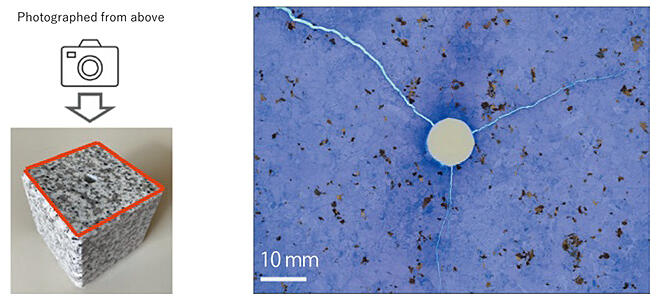In the drilling of shale gas, which is attracting attention as a new resource, and in the underground storage of carbon dioxide, which is a global warming countermeasure, making underground fluids flow more easily leads to efficient methods. Hydraulic fracturing, which involves injecting high-pressure fluid several kilometers underground through vertical holes dug in the ground and using that pressure to fracture rocks and create artificial cracks, is a key technology. However, with conventional hydraulic fracturing methods, the fractures are one-directional, with the direction determined by underground conditions, and it was not possible to create them in other directions.
A research team led by Associate Professor Yusuke Mukuhira of the Institute of Fluid Science at Tohoku University conducted experiments fracturing rock specimens made from granite using a functional fluid called "shear thickening fluid," whose viscosity changes dramatically with velocity. They succeeded in creating fractures in multiple directions from vertical holes drilled in the specimens. Shear thickening fluid consists of fine particles dispersed in a solvent that form aggregates in response to external forces, and the viscosity increases due to the resistance caused by this. In underground environments, it temporarily solidifies when flow velocity increases. The team believes that great pressure is generated when the fluid solidifies, creating fractures in multiple directions.
The method developed by the team will enable the recovery of underground resources that were previously inaccessible, and even in situations where resource reservoirs are heterogeneously distributed, such as in geothermal development, it will become easier to reach the reservoirs, potentially reducing drilling costs. Furthermore, applications in various fields, such as safety measures in mining development, are awaited as drilling depths are becoming increasingly deeper in recent years.
(Article: Masanori Nakajo)

(Patent Number: WO2024/157470)




